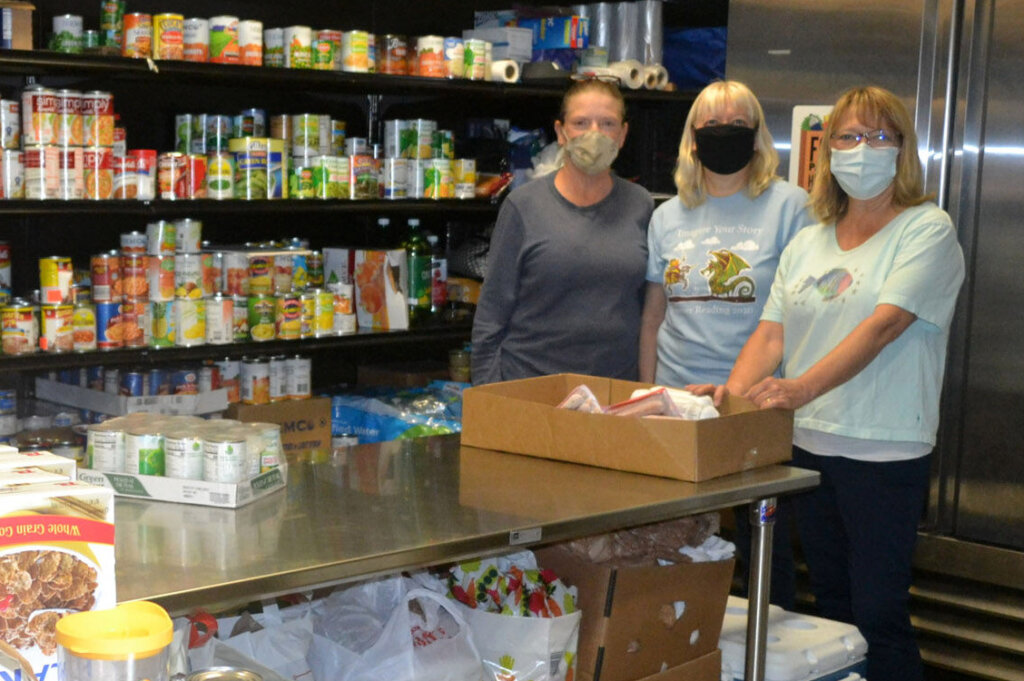
Even before COVID-19 first impacted Maryland in 2020, the Anne Arundel County Food Bank was changing how it distributed food to the community. For many who would need their support, those changes came just in time.
“March 13: It was a Friday, which is ironic. But that’s when COVID really hit us,” said Susan Thomas, the food bank’s chief operating officer. “We lost our entire volunteer team.”
The local jail was no longer allowed to bring inmates to work in the food warehouse. Seniors, who make up a large portion of AACFB’s volunteer force, also needed to stay at home.
As the local economy began to feel the impact, Thomas said, residents who had previously been supporting the food bank began coming to them for help.
“There’s definitely a lot of people who don’t have the luxury to really have that savings,” she said. “So without having a safety net, we are their safety net.”
Thomas added that “52% of the people that accessed the pantry had never accessed one before COVID.”
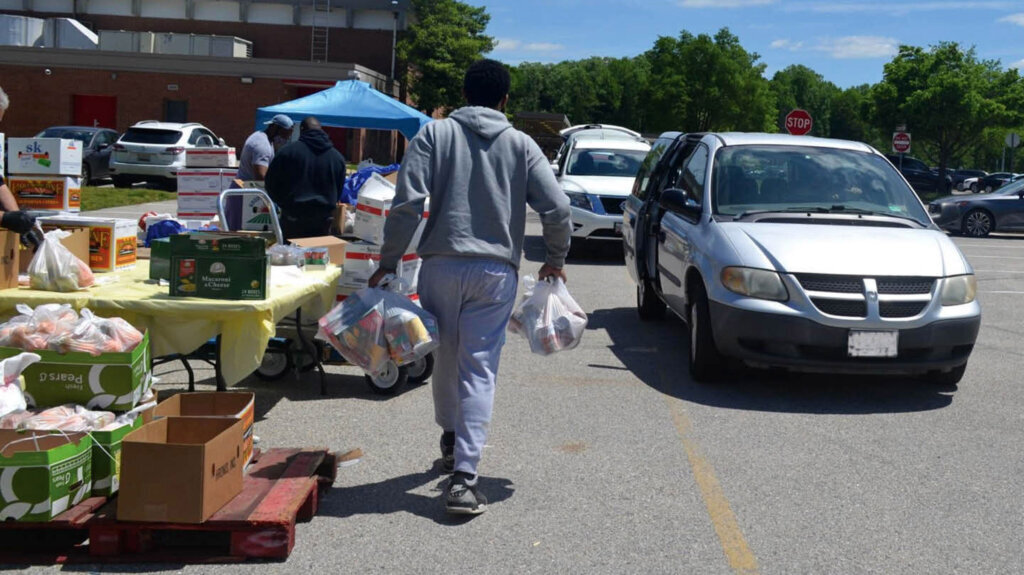
Between the increased need and the loss of human resources, the situation could have been dire. Fortunately, some of the initiatives the food bank had set into motion before anyone had even heard of the pandemic allowed them to adapt to the new reality.
After founder Bruce Michalec stepped down as executive director (and later passed away) in 2018, leaders at the food bank began a process of reshaping their organizational structure, fundraising and facilities, as well as how they gathered and distributed food.
One of those changes was moving from a food donation model to one prioritizing their own purchasing power.
“Before COVID started, we were primarily supplied through food drive donations and through retail rescue, which is picking up from local grocery stores,” Thomas said. “The items that might be coming up on date that they can’t sell, but are still good … or items that they just couldn’t use.”
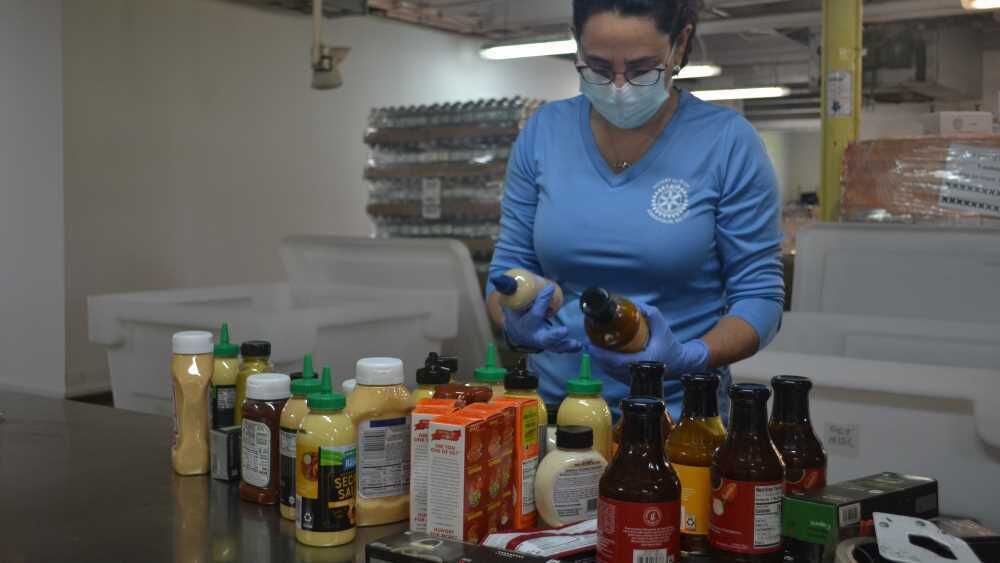
This hand-to-mouth model, while well intentioned, often resulted in a food inventory that was inconsistent and didn’t always meet the needs of those seeking help. Being able to select and buy their own inventory would give them more flexibility to meet those needs.
With strategic fundraising and aid of various government emergency programs such as the American Rescue Plan, the food bank went from buying just 1% ($185,000) of the food they would distribute in fiscal 2020, to 74% ($2.93 million) in 2021.
That way, they were able to give out more than three times the amount of food and other goods in 2021 than they had the year before.
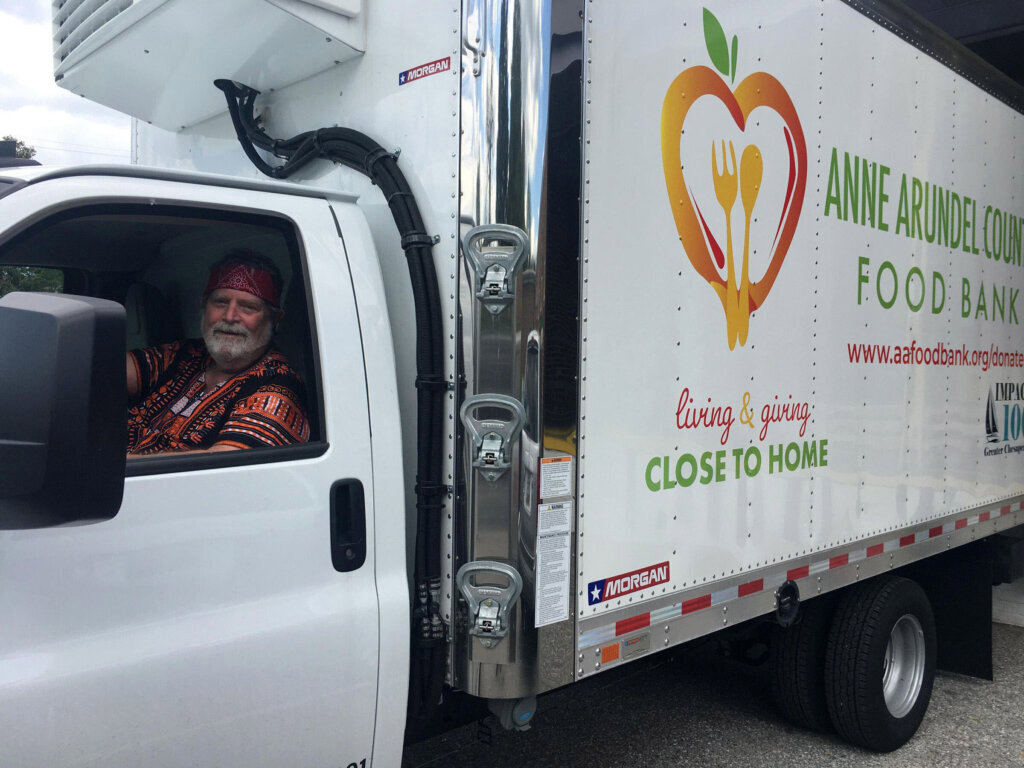
They also upgraded offices and warehouse space, bought three vans for food delivery, and hired staff for fundraising and raising revenue.
Until COVID vaccines became widely available in 2021, many of AACFB’s volunteers, workforce and partners were waylaid by pandemic fears and restrictions. People who needed the food were also concerned about infection. Traditional brick-and-mortar pantries would not work.
“We ended up switching to a drive-thru model, and worked on training all of our pantries on new safe techniques in order to help more people than (we) had ever done before,” Thomas said.
As recently as this June, demand at drive-thru pantries has been so great that they’ve had to call on the Anne Arundel and City of Annapolis Community Emergency Response Team to manage traffic overflow.
“We’ve had pantries where the lines of cars wrapped around the buildings and down the road,” she said. “Traffic control just helped maintain order. To eliminate chaos.”
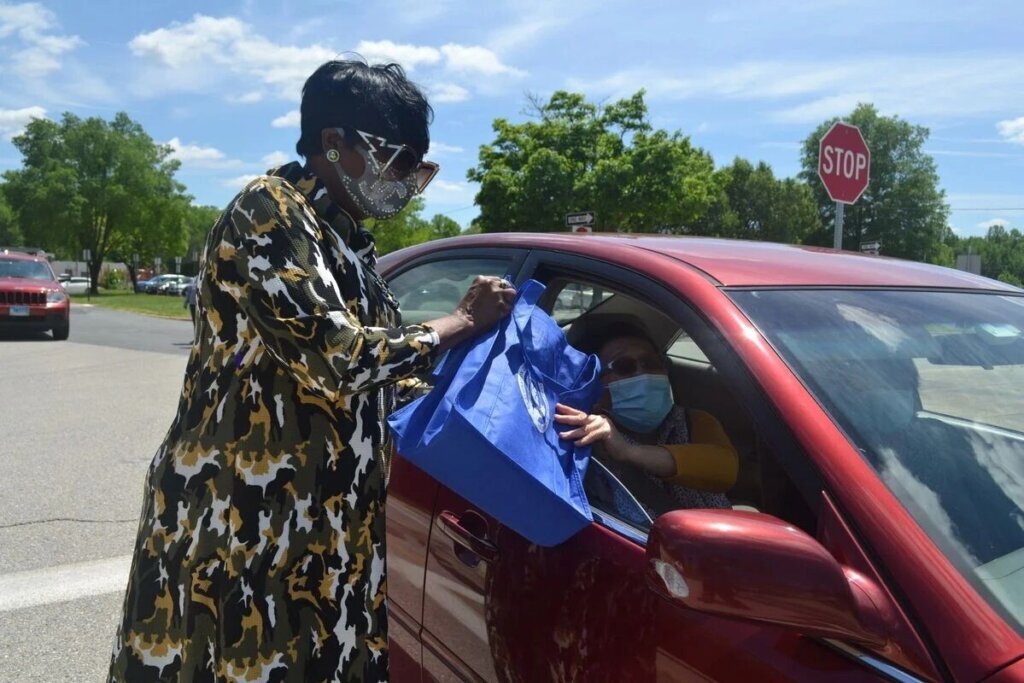
Having their own purchasing power also allowed them to make sure they had food available for all of Anne Arundel’s residents.
“We have so many different ethnicities now in Anne Arundel County, and what one culture likes, the other one might not like,” Thomas said. “So we’re also trying to look at which pantry distributions we have, what the largest cultural groups going to those pantries are, and then make sure we’re purchasing culturally appropriate food that they will consume.”
The food bank has also expanded the Pantry on the Go program, which allows them to set up temporary sites in areas of need throughout the county, such as schools, community centers and churches.
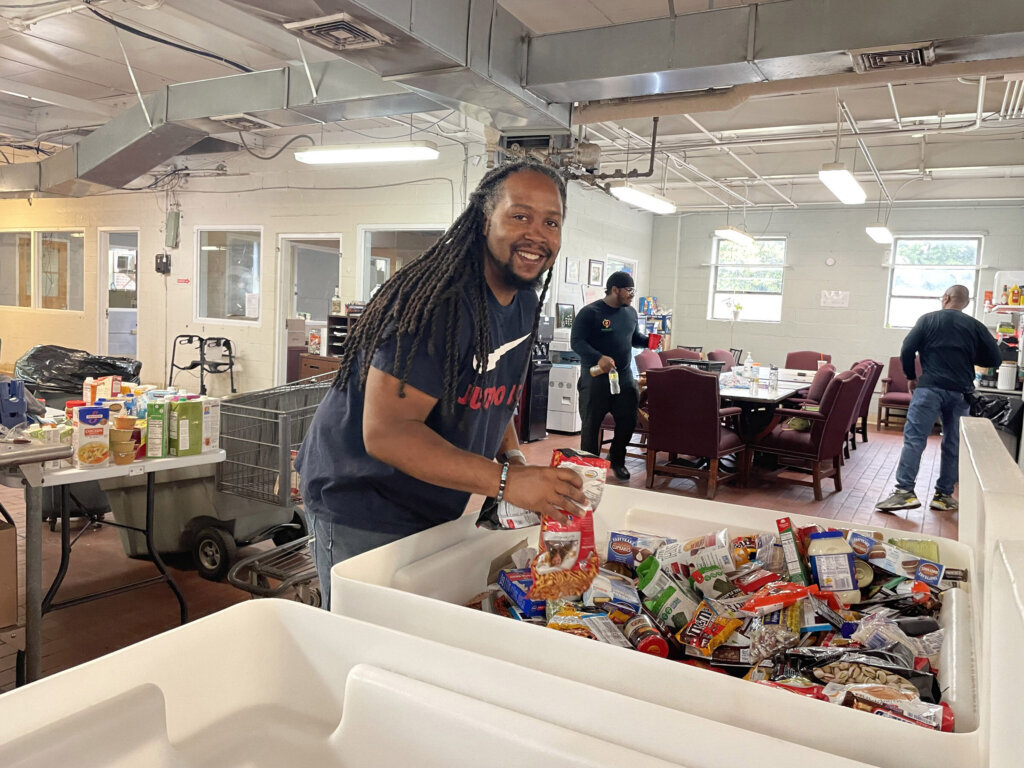
Before speaking to WTOP, Thomas had just visited a Pantry on the Go site at Brock Bridge Elementary School, which was setting up to distribute baby supplies — the demand for which has grown continuously because of national supply issues.
“During COVID, they said one of the top things that had been getting stolen from stores were formula and diapers. And there just wasn’t enough support out there for them,” Thomas said. “So we more than doubled our baby pantries over the last fiscal year.”
Food bank CEO Leah Paley said “the Pantry on the Go program, a collaboration with Anne Arundel County’s Partnership for Children, Youth, and Families fed at least 163,703 households“ in fiscal 2021.
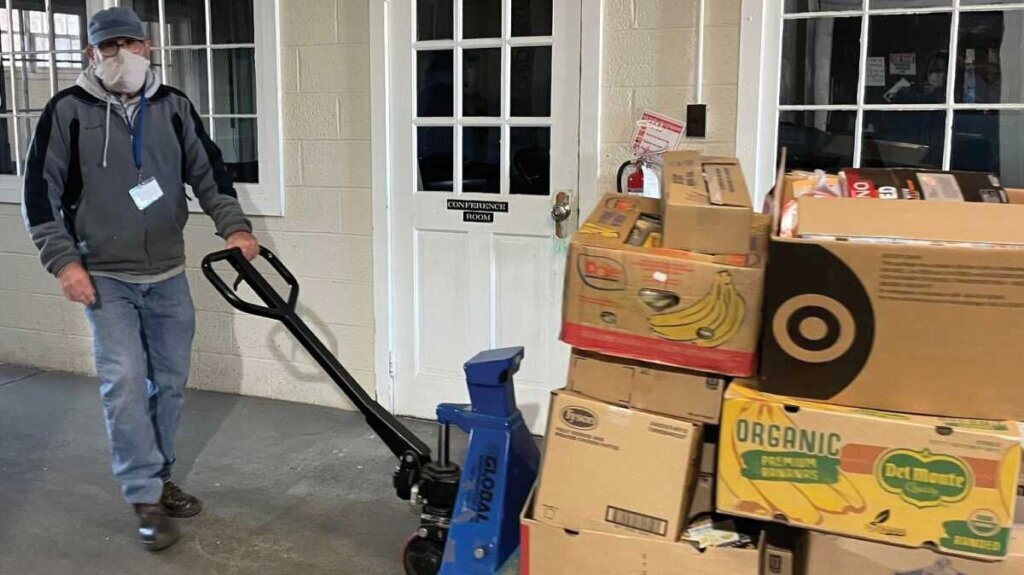
With the new organization focus, in the last three years, AACFB and their partners have been able to continue and even expand programs, such as:
- Specialized pantries for seniors, baby supplies and pet food;
- Clothing banks;
- Soup kitchens for the unhoused, and
- A backpack program allowing Anne Arundel school children in need to bring healthy food home for their families during the year
According to their 2021 financial report, the food bank and partner agencies managed to distribute 5.8 million pounds of food to about 70,000 households in the county.
While Thomas says the organizational restructuring helped them be more focused with their efforts than ever before, she worries what may happen when emergency aid from local and federal resources starts to dry out.
“There’s been such tremendous support for the food bank, and that’s helped us meet the needs so far,” she said “I’m just concerned about what that’s going to look like [if we’re] going into the recession, and if the funding goes away.”
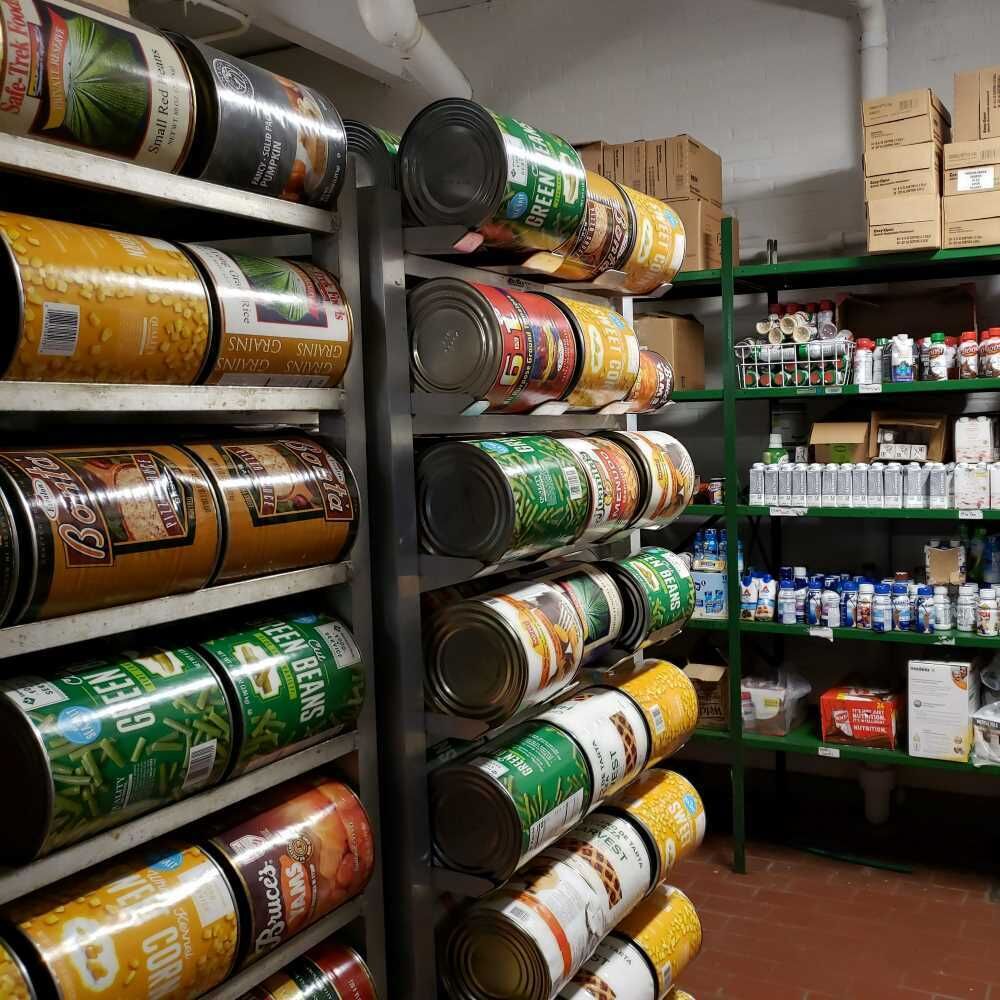
More than anything else, Thomas said, it’s the ongoing involvement of Anne Arundel’s residents that keeps the mission moving forward.
“Whatever somebody is comfortable donating, whether that’s food, whether it’s formula diapers or their time — they can reach out to us anytime.”
And for those struggling, Thomas recalled the sentiments of Michalec, the food bank’s late founder.
“We don’t consider what we’re doing as a handout. Everybody needs help at some time,” she said. “Let us help you keep food on the table, and you take the funds you have to keep a roof over your head.”
For Hunger Action Month in September, the food bank is offering passport booklets for anyone interested in supporting food security in the area. They will also host several events throughout the month, including Cruising Out Hunger, an event aboard Watermarks’ Harbor Queen Sept. 29.
Visit their website for more information.








